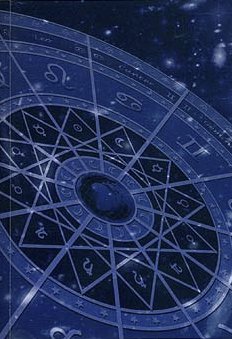Carajya, Carajyā, Cārajyā, Cara-jya: 9 definitions
Introduction:
Carajya means something in Hinduism, Sanskrit, Marathi. If you want to know the exact meaning, history, etymology or English translation of this term then check out the descriptions on this page. Add your comment or reference to a book if you want to contribute to this summary article.
Alternative spellings of this word include Charajya.
In Hinduism
Jyotisha (astronomy and astrology)
Source: Wikibooks (hi): Sanskrit Technical TermsCarajyā (चरज्या).—The R sine of the ascensional difference. Note: Carajyā is a Sanskrit technical term used in ancient Indian sciences such as Astronomy, Mathematics and Geometry.
Source: INSA Digital Repository: Determination of Ascensional Difference in the LagnaprakaranaCarajyā (चरज्या) refers to the “Rsine of the ascensional difference”, according to verse 21 of the Lagnaprakaraṇa (lit. “treatise for the computation of the ascendant), an astronomical work in eight chapters dealing with the determination of the ascendant (udayalagna or orient ecliptic point).—Accordingly, “The square-root taken from—the square of the Rsine [of the Sun’s longitude] decreased by the square of [the Rsine of] the declination corresponding to the longitude—is the koṭi of this [declination] itself. Or, the last day-radius multiplied by the Rsine [of the Sun’s longitude] and divided by the radius is the koṭi corresponding to this declination. Here, [scholars] state the square root taken from—its square increased by the square of the Rcosine [of the Sun’s longitude]—to be the day-radius. The koṭi of the desired declination multiplied by the maximum ascensional difference and divided by the day-radius is the Rsine of the ascensional difference (carajyā)”.

Jyotisha (ज्योतिष, jyotiṣa or jyotish) refers to ‘astronomy’ or “Vedic astrology” and represents the fifth of the six Vedangas (additional sciences to be studied along with the Vedas). Jyotisha concerns itself with the study and prediction of the movements of celestial bodies, in order to calculate the auspicious time for rituals and ceremonies.
Languages of India and abroad
Marathi-English dictionary
Source: DDSA: The Molesworth Marathi and English Dictionarycarajyā (चरज्या).—f S The sine of ascensional difference.
Marathi is an Indo-European language having over 70 million native speakers people in (predominantly) Maharashtra India. Marathi, like many other Indo-Aryan languages, evolved from early forms of Prakrit, which itself is a subset of Sanskrit, one of the most ancient languages of the world.
Sanskrit dictionary
Source: DDSA: The practical Sanskrit-English dictionaryCārajyā (चारज्या).—the sine of the ascensional difference.
Cārajyā is a Sanskrit compound consisting of the terms cāra and jyā (ज्या).
Source: Cologne Digital Sanskrit Dictionaries: Shabda-Sagara Sanskrit-English DictionaryCārajyā (चारज्या).—f.
(-jyā) The sine of the ascenscional difference. (In astronomy.) E. cāra, and jyā sine.
Source: Cologne Digital Sanskrit Dictionaries: Monier-Williams Sanskrit-English Dictionary1) Carajyā (चरज्या):—[=cara-jyā] [from cara > car] f. idem, 34 [Scholiast or Commentator] [Golādhyāya vii, 1 [Scholiast or Commentator]]
2) Cārajyā (चारज्या):—[=cāra-jyā] [from cāra] for cara-.
Source: Cologne Digital Sanskrit Dictionaries: Yates Sanskrit-English DictionaryCārajyā (चारज्या):—[cāra-jyā] (jyā) 1. f. Sine of the ascensional difference.
[Sanskrit to German]
Sanskrit, also spelled संस्कृतम् (saṃskṛtam), is an ancient language of India commonly seen as the grandmother of the Indo-European language family (even English!). Closely allied with Prakrit and Pali, Sanskrit is more exhaustive in both grammar and terms and has the most extensive collection of literature in the world, greatly surpassing its sister-languages Greek and Latin.
See also (Relevant definitions)
Relevant text
No search results for Carajya, Carajyā, Cārajyā, Cara-jya, Cāra-jyā, Cara-jyā; (plurals include: Carajyas, Carajyās, Cārajyās, jyas, jyās) in any book or story.